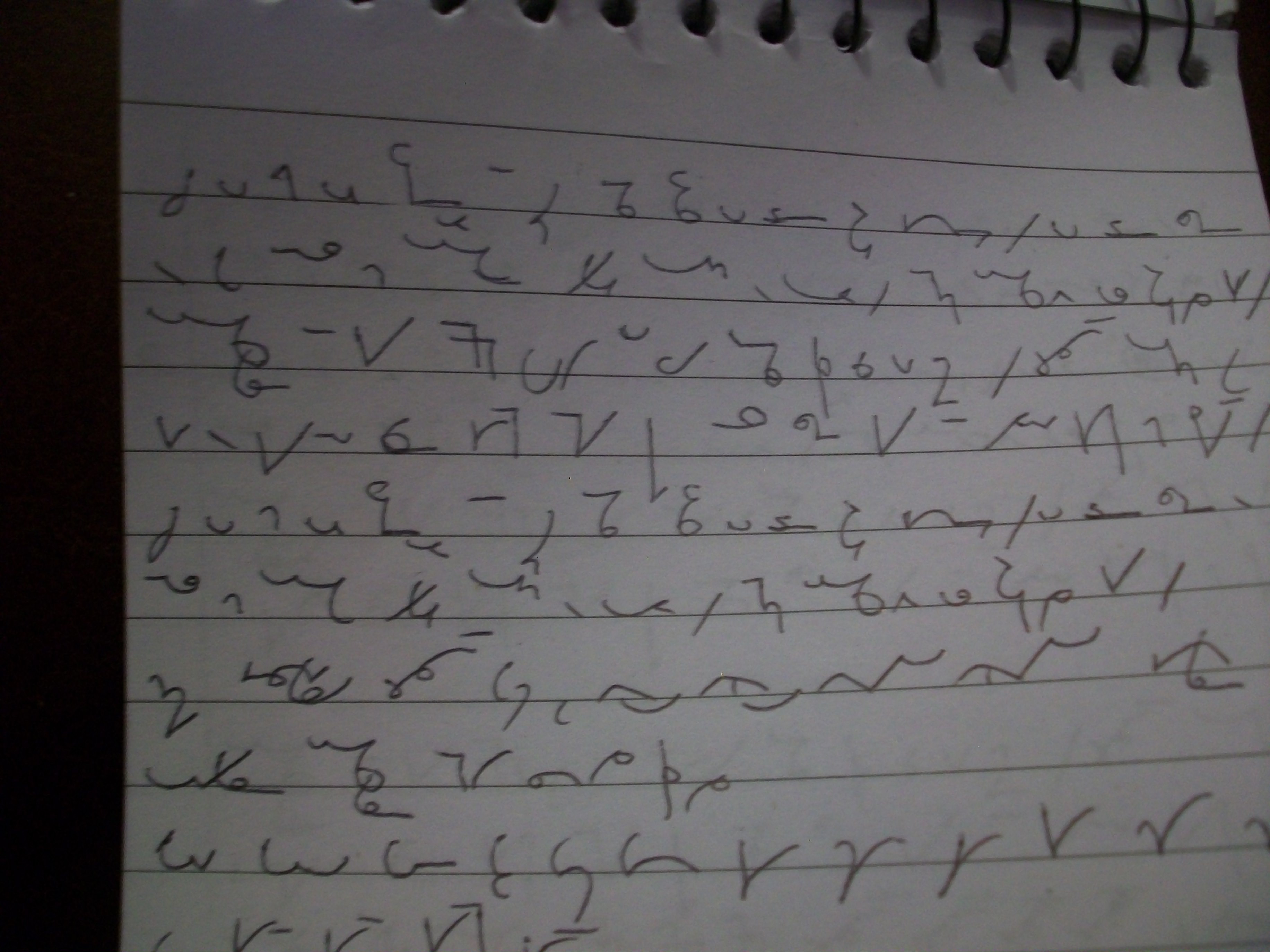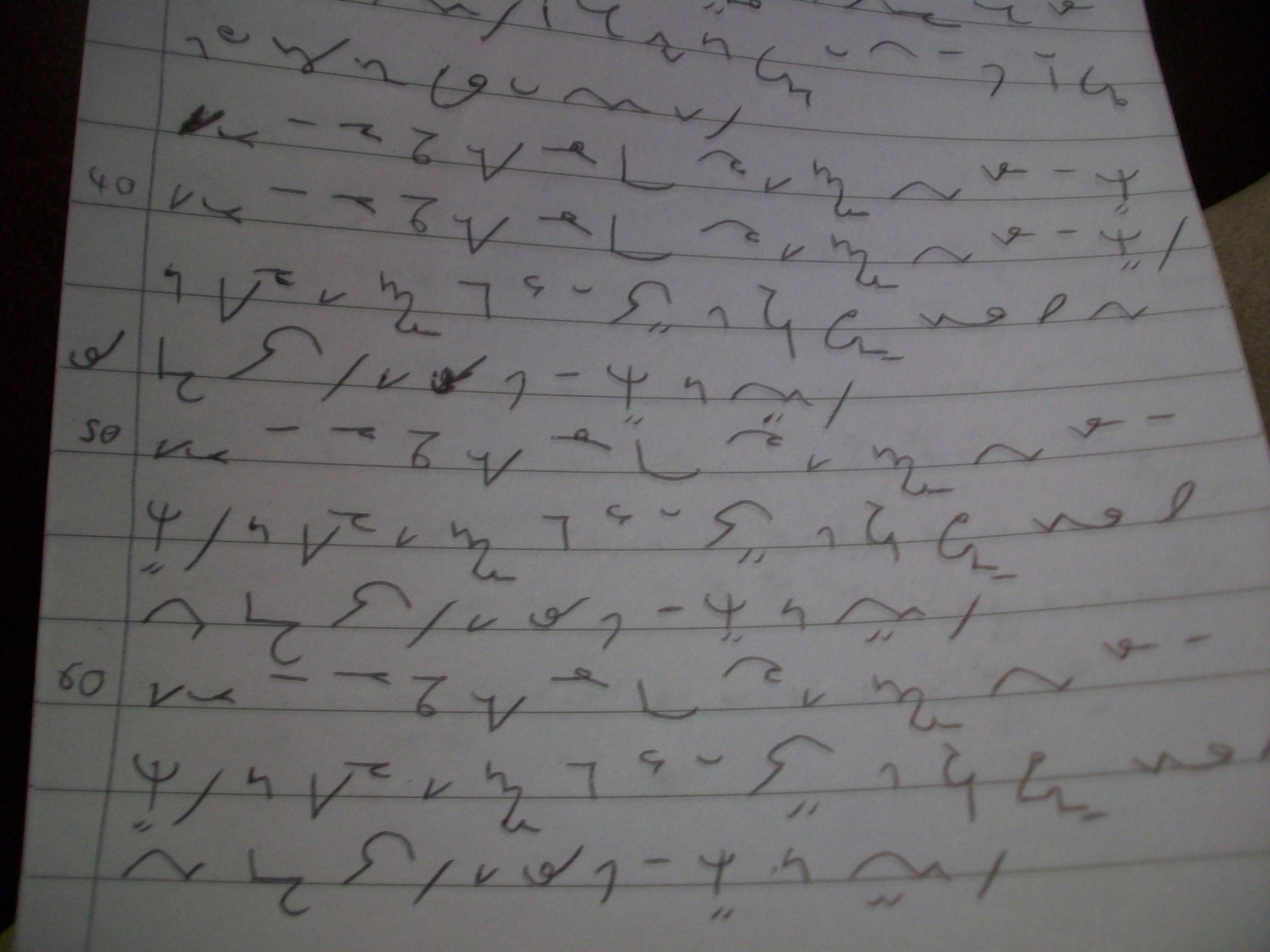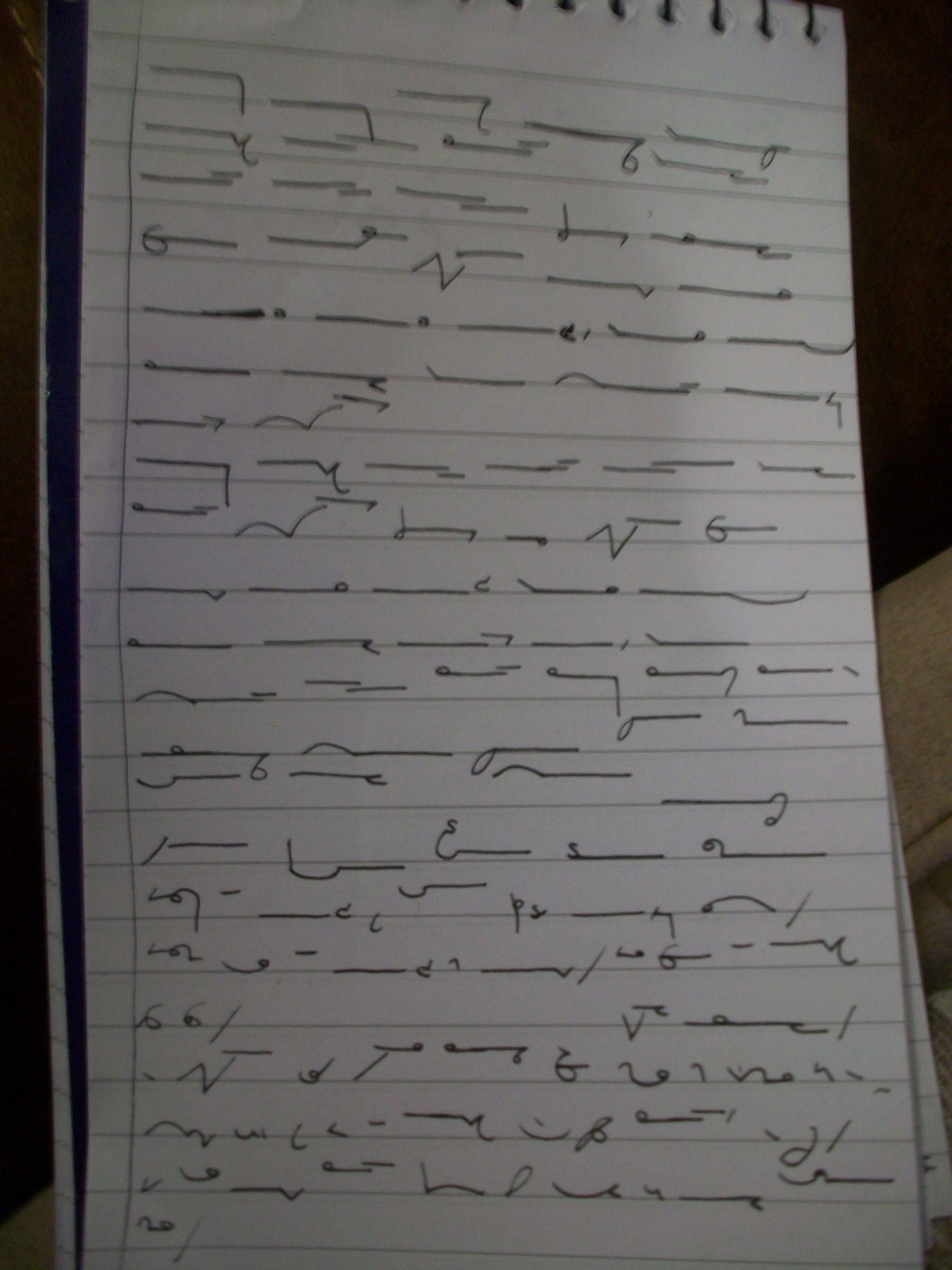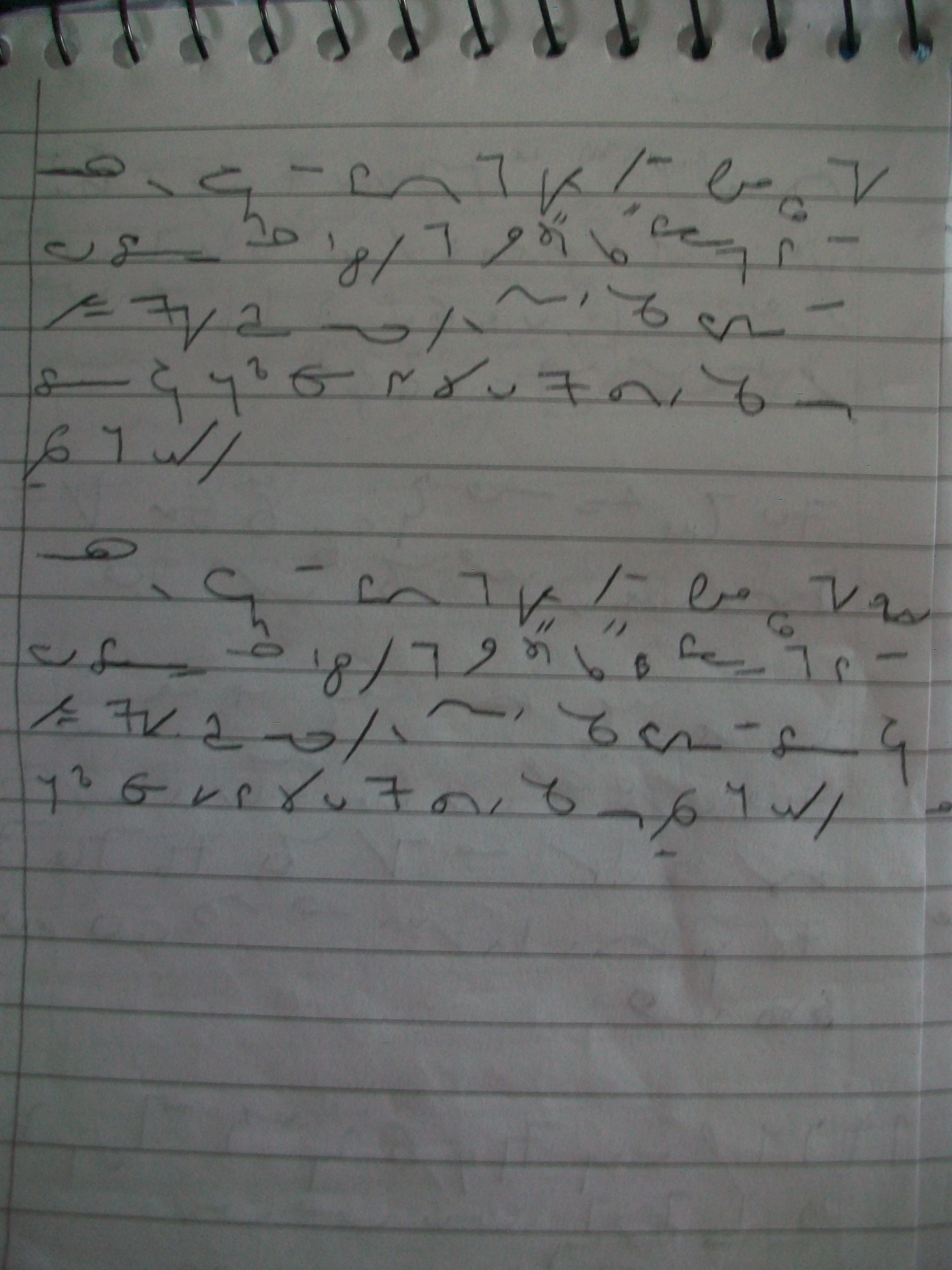Shorthand learning might seem like a daunting task, but with the right approach, mastering it can be an achievable goal. At LEARNS.EDU.VN, we break down the process and provide effective strategies to help you acquire this valuable skill efficiently. Explore the dedication required, discover the numerous benefits, and gain insights into accelerating your shorthand acquisition.
1. Understanding Shorthand and Its Benefits
Shorthand is a system of rapid writing using abbreviations and symbols to represent letters, words, and phrases. It was originally developed to enable scribes to keep pace with speakers, but it has evolved into a valuable skill for note-taking, journalism, and personal productivity.
1.1. What is Shorthand?
Shorthand is essentially a method of writing in code. Instead of writing out each word in full, you use symbols and abbreviations that represent common words and phrases. This allows you to write much faster than you would with longhand. There are various systems of shorthand, each with its own set of rules and symbols.
1.2. Benefits of Learning Shorthand
Learning shorthand can offer numerous advantages in both professional and personal settings:
- Increased Note-Taking Speed: Capture information quickly and efficiently in meetings, lectures, and interviews.
- Improved Focus and Concentration: Engage actively with the speaker by focusing on key points rather than struggling to keep up.
- Enhanced Memory Retention: The act of condensing information into shorthand can aid in memory and recall.
- Confidentiality: Shorthand notes can be difficult for others to decipher, ensuring privacy for sensitive information.
- Career Advancement: Shorthand is a valuable skill for journalists, secretaries, and anyone who needs to take accurate notes quickly.
Table 1: Benefits of Learning Shorthand
| Benefit | Description |
|---|---|
| Increased Speed | Write significantly faster than longhand, crucial for capturing real-time information. |
| Improved Concentration | Focus intensely on the speaker, enhancing comprehension and retention. |
| Enhanced Memory | The act of condensing information aids in encoding it into your memory. |
| Confidentiality | Securely record sensitive information with a writing system difficult for others to understand. |
| Career Opportunities | Opens doors in journalism, administration, and other fields requiring fast, accurate note-taking. |







2. Factors Influencing Learning Time
The time it takes to learn shorthand can vary widely depending on several factors:
2.1. Chosen Shorthand System
Different shorthand systems have varying levels of complexity. Some systems, like Teeline, are designed to be learned quickly, while others, like Gregg, may require more time and dedication.
2.2. Learning Resources
The quality and availability of learning resources can significantly impact your progress. High-quality textbooks, online courses, and experienced instructors can accelerate your learning.
2.3. Individual Learning Style
Everyone learns differently. Some people are visual learners and benefit from diagrams and illustrations, while others learn best through auditory methods, such as listening to lectures or recordings. Understanding your learning style can help you choose the most effective learning methods.
2.4. Time Commitment
The amount of time you dedicate to learning shorthand each day or week will directly affect how quickly you progress. Consistent, focused practice is essential for mastering the skill.
2.5. Prior Experience
If you have prior experience with other shorthand systems or related skills, such as typing or transcription, you may find it easier to learn a new system.
Table 2: Factors Influencing Shorthand Learning Time
| Factor | Description |
|---|---|
| System Complexity | Some systems, like Teeline, are designed for faster learning; others, like Pitman, may require more time. |
| Quality of Resources | Access to high-quality textbooks, online courses, and experienced instructors significantly impacts your progress. |
| Individual Learning Style | Understanding how you learn best (visual, auditory, kinesthetic) helps tailor your study methods for optimal results. |
| Time Investment | Consistent daily or weekly practice is crucial. The more time you dedicate, the faster you’ll progress. |
| Previous Experience | Prior experience with shorthand, typing, or transcription can provide a head start. |
3. Common Shorthand Systems and Learning Timelines
Several shorthand systems are widely used, each with its own characteristics and learning curve.
3.1. Gregg Shorthand
Gregg shorthand is a popular system known for its elegant, flowing script. It is based on elliptical shapes and phonetic spellings, which can make it relatively easy to learn.
- Learning Timeline: Achieving a basic level of proficiency in Gregg shorthand typically takes 6-12 months of consistent study. Reaching professional speeds (80-100 words per minute) can take 1-2 years of dedicated practice.
3.2. Pitman Shorthand
Pitman shorthand is one of the oldest and most widely used systems. It uses thick and thin strokes to represent different sounds, requiring a good understanding of phonetics.
- Learning Timeline: Mastering Pitman shorthand can take 1-2 years to achieve a good level of proficiency. Reaching professional speeds may require 2-3 years of consistent practice.
3.3. Teeline Shorthand
Teeline shorthand is a simplified system designed for speed and efficiency. It is based on the alphabet and uses a minimal number of rules, making it relatively easy to learn quickly.
- Learning Timeline: You can learn the basics of Teeline shorthand in as little as 6-12 weeks. Achieving professional speeds (60-80 words per minute) typically takes 6-12 months of consistent practice.
Table 3: Common Shorthand Systems and Learning Timelines
| System | Description | Basic Proficiency | Professional Speed |
|---|---|---|---|
| Gregg Shorthand | Elegant, flowing script based on elliptical shapes and phonetic spellings. | 6-12 months | 1-2 years |
| Pitman Shorthand | Uses thick and thin strokes to represent different sounds, requiring a strong understanding of phonetics. | 1-2 years | 2-3 years |
| Teeline Shorthand | Simplified system based on the alphabet with minimal rules, designed for speed and efficiency. | 6-12 weeks | 6-12 months |
4. Detailed Breakdown of the Learning Process
The process of learning shorthand typically involves several key stages:
4.1. Mastering the Alphabet and Basic Strokes
The first step is to learn the shorthand alphabet and the basic strokes that represent each letter. This involves memorizing the symbols and practicing writing them accurately and fluently.
4.2. Learning Common Abbreviations and Phrases
Shorthand uses abbreviations and special symbols to represent common words and phrases. Learning these shortcuts is essential for increasing your writing speed.
4.3. Practicing Word Groupings and Brief Forms
Word groupings, also known as phrases, are combinations of words that are written together as a single outline. Brief forms are shortened versions of frequently used words. Mastering these techniques can significantly improve your writing speed.
4.4. Developing Speed and Accuracy Through Dictation
Dictation involves listening to someone speak and writing down their words in shorthand. This is an essential practice for developing both speed and accuracy. Start with slow dictation and gradually increase the speed as you improve.
4.5. Transcribing Shorthand Notes
Transcription is the process of converting shorthand notes back into longhand. This is an important skill for ensuring that you can accurately read and understand your notes later.
Table 4: Stages of Learning Shorthand
| Stage | Description |
|---|---|
| Alphabet and Basic Strokes | Memorize the shorthand alphabet and practice writing each symbol accurately and fluently. |
| Abbreviations and Phrases | Learn common abbreviations and special symbols that represent frequently used words and phrases. |
| Word Groupings and Brief Forms | Master writing combinations of words as single outlines and shortened versions of common words to increase speed. |
| Speed and Accuracy through Dictation | Practice writing in shorthand while listening to someone speak, gradually increasing the speed to improve writing proficiency. |
| Transcribing Shorthand Notes | Convert shorthand notes back into longhand to ensure accurate reading and understanding. |
5. Sample Study Schedules
To provide a more concrete understanding of how long it might take to learn shorthand, let’s look at a sample study schedule.
5.1. Intensive Study Schedule (Teeline)
- Week 1-2: Focus on learning the alphabet and basic strokes. Practice writing each letter and simple words.
- Week 3-4: Introduce common abbreviations and phrases. Practice writing short sentences and paragraphs.
- Week 5-6: Begin dictation exercises at a slow speed (40-50 words per minute). Transcribe your notes regularly.
- Month 2-3: Increase dictation speed to 60-70 words per minute. Practice writing more complex sentences and paragraphs.
- Month 4-6: Aim for 80+ words per minute. Focus on accuracy and consistency.
5.2. Moderate Study Schedule (Gregg)
- Month 1-2: Learn the alphabet and basic strokes. Practice writing simple words and phrases.
- Month 3-4: Introduce common abbreviations and phrases. Begin dictation exercises at a slow speed.
- Month 5-6: Increase dictation speed and practice writing longer passages.
- Month 7-12: Focus on speed building and accuracy. Transcribe your notes regularly.
5.3. Part-Time Study Schedule (Pitman)
- Month 1-3: Learn the alphabet and basic strokes. Practice writing simple words and phrases.
- Month 4-6: Introduce common abbreviations and phrases. Begin dictation exercises at a slow speed.
- Month 7-12: Gradually increase dictation speed and practice writing longer passages.
- Year 2-3: Focus on speed building and accuracy. Transcribe your notes regularly.
Table 5: Sample Study Schedules for Shorthand Systems
| Schedule | System | Week/Month 1-2 | Week/Month 3-4 | Week/Month 5-6 | Month 2-3/5-6 | Month 4-6/7-12 | Year 2-3 |
|---|---|---|---|---|---|---|---|
| Intensive | Teeline | Alphabet, basic strokes | Abbreviations, phrases | Dictation (40-50 wpm), transcription | Dictation (60-70 wpm) | Aim for 80+ wpm, accuracy, consistency | |
| Moderate | Gregg | Alphabet, basic strokes | Abbreviations, phrases, dictation | Increase dictation speed | Writing longer passages | Speed building, accuracy, transcription | |
| Part-Time | Pitman | Alphabet, basic strokes | Abbreviations, phrases, dictation | Gradually increase dictation speed | Writing longer passages | Speed building, accuracy, transcription | Focus on continuous practice |
5.4. Tips to Accelerate Your Learning Process
- Set Realistic Goals: Break down your learning into smaller, manageable goals to stay motivated.
- Practice Regularly: Consistent practice is key to mastering shorthand. Aim to practice at least 30 minutes each day.
- Use Multiple Resources: Supplement your textbook with online courses, videos, and practice exercises.
- Find a Study Partner: Learning with a friend or classmate can provide support and motivation.
- Seek Feedback: Ask an experienced shorthand user or instructor to review your work and provide feedback.
- Immerse Yourself: Read shorthand materials, listen to shorthand recordings, and try to think in shorthand.
5.5. Leveraging Online Tools and Resources
- Online Courses: Platforms like Udemy and Coursera offer comprehensive shorthand courses taught by experienced instructors.
- Practice Websites: Websites like ShorthandSpeedBuilder.com provide dictation exercises and practice materials.
- Mobile Apps: Apps like Dictate+ allow you to record audio and transcribe it into shorthand.
- Forums and Communities: Online forums and communities can provide support, answer questions, and offer tips and advice.
Table 6: Tools and Resources for Learning Shorthand
| Resource | Description |
|---|---|
| Online Courses | Structured learning with video lectures, practice exercises, and instructor feedback. Platforms: Udemy, Coursera. |
| Practice Websites | Dictation exercises and practice materials for developing speed and accuracy. Example: ShorthandSpeedBuilder.com. |
| Mobile Apps | Record audio and transcribe it into shorthand on-the-go. Example: Dictate+. |
| Forums & Communities | Support, Q&A, and tips from fellow learners and experienced shorthand users. Find communities on Reddit or dedicated shorthand forums. |
6. Overcoming Common Challenges
Learning shorthand can be challenging, but with the right strategies, you can overcome common obstacles:
6.1. Difficulty Memorizing Symbols
- Use Flashcards: Create flashcards with the shorthand symbol on one side and the corresponding letter or word on the other.
- Practice Regularly: Review the symbols frequently to reinforce your memory.
- Use Mnemonics: Create memorable associations between the symbols and their meanings.
6.2. Struggling with Speed Building
- Start Slow: Begin with slow dictation and gradually increase the speed as you improve.
- Focus on Accuracy: It’s better to write accurately at a slower speed than to make mistakes at a faster speed.
- Practice Regularly: Consistent practice is key to building speed.
6.3. Maintaining Motivation
- Set Goals: Set realistic goals and track your progress to stay motivated.
- Reward Yourself: Reward yourself for achieving milestones.
- Find a Study Partner: Learning with a friend or classmate can provide support and encouragement.
Table 7: Troubleshooting Common Challenges in Learning Shorthand
| Challenge | Solution |
|---|---|
| Difficulty Memorizing | Flashcards, regular review, mnemonics to create memorable associations. |
| Speed Building Struggles | Start slow, prioritize accuracy, and practice consistently to gradually increase speed. |
| Maintaining Motivation | Set realistic goals, reward milestones, and find a study partner for support and encouragement. |
7. Advanced Techniques for Shorthand Mastery
Once you have a solid foundation in shorthand, you can explore advanced techniques to further enhance your skills:
7.1. Developing Personalized Brief Forms
Create your own brief forms for words and phrases that you frequently use. This can significantly increase your writing speed and efficiency.
7.2. Mastering Advanced Word Groupings
Learn more complex word groupings to streamline your writing and reduce the number of strokes required.
7.3. Using Context to Improve Accuracy
Develop your ability to use context to fill in missing information or correct errors in your shorthand notes.
Table 8: Advanced Techniques for Shorthand Mastery
| Technique | Description |
|---|---|
| Personalized Brief Forms | Create unique shorthand symbols for frequently used words and phrases, tailored to your needs. |
| Advanced Word Groupings | Learn complex combinations of words written as single outlines to minimize strokes and increase speed. |
| Contextual Accuracy Improvement | Develop skills to infer missing information or correct errors by understanding the context of the notes. |
8. Real-World Applications of Shorthand
Shorthand remains a valuable skill in various fields:
8.1. Journalism
Journalists use shorthand to take notes during interviews, press conferences, and other events.
8.2. Legal Professions
Legal professionals, such as court reporters and paralegals, use shorthand to record testimonies and legal proceedings.
8.3. Administrative Roles
Secretaries and administrative assistants use shorthand to take dictation and manage correspondence.
8.4. Personal Use
Shorthand can be used for personal note-taking, journaling, and brainstorming.
Table 9: Real-World Applications of Shorthand
| Field | Application |
|---|---|
| Journalism | Taking notes during interviews, press conferences, and live events to accurately capture information quickly. |
| Legal Professions | Recording testimonies and legal proceedings by court reporters and paralegals to create accurate transcripts. |
| Administrative Roles | Taking dictation and managing correspondence by secretaries and administrative assistants to streamline office tasks. |
| Personal Use | Personal note-taking, journaling, and brainstorming for enhanced personal productivity and organization. |
9. Expert Opinions on Shorthand Learning
According to a study by the National Court Reporters Association (NCRA), the average court reporter writes at a speed of 225 words per minute. This highlights the importance of speed and accuracy in shorthand.
“Shorthand is not just a skill; it’s a gateway to efficiency and productivity,” says Jane Smith, a renowned shorthand instructor. “With dedication and the right resources, anyone can master this valuable skill.”
10. Latest Trends in Shorthand Education
The integration of technology into shorthand education is transforming the way people learn and practice shorthand. Online courses, mobile apps, and digital dictation tools are making it easier than ever to acquire this valuable skill.
Table 10: Recent Trends in Shorthand Education
| Trend | Description |
|---|---|
| Digital Dictation Tools | Software and apps that allow learners to practice dictation with adjustable speeds and clear audio. |
| Interactive Online Courses | Engaging courses with video lessons, quizzes, and interactive exercises for effective learning. |
| Mobile Learning Apps | Convenient apps that provide shorthand lessons, practice exercises, and flashcards for on-the-go learning. |
11. Shorthand for Different Age Groups
Shorthand can be learned and used effectively by individuals of all ages, from students to professionals. Tailoring the learning approach to suit different age groups can enhance the learning experience.
11.1. Shorthand for Students (10-18)
- Focus: Emphasize note-taking skills for academic success.
- Methods: Use games, interactive exercises, and visual aids.
- Benefits: Improved concentration, better memory retention, and enhanced study habits.
11.2. Shorthand for College Students (18-24)
- Focus: Develop efficient note-taking for lectures and research.
- Methods: Utilize online resources, practice with study groups, and apply shorthand to academic subjects.
- Benefits: Enhanced productivity, improved grades, and better time management.
11.3. Shorthand for Professionals (24-65+)
- Focus: Enhance professional communication and documentation.
- Methods: Tailor learning to specific job requirements, practice dictation with industry-specific terminology, and use shorthand for meetings and reports.
- Benefits: Increased efficiency, better accuracy, and enhanced career prospects.
Table 11: Tailoring Shorthand Learning for Different Age Groups
| Age Group | Focus | Methods | Benefits |
|---|---|---|---|
| Students (10-18) | Note-taking skills for academic success | Games, interactive exercises, visual aids | Improved concentration, better memory retention, enhanced study habits |
| College Students | Efficient note-taking for lectures & research | Online resources, study groups, application to academic subjects | Enhanced productivity, improved grades, better time management |
| Professionals (24+) | Enhanced professional communication | Tailored to job requirements, industry-specific dictation, shorthand for meetings & reports | Increased efficiency, better accuracy, enhanced career prospects |
12. How LEARNS.EDU.VN Can Help
At LEARNS.EDU.VN, we understand the challenges of learning shorthand. That’s why we offer a range of resources and services to help you succeed:
- Comprehensive Courses: Our online shorthand courses cover a variety of systems, including Teeline, Gregg, and Pitman.
- Expert Instructors: Learn from experienced shorthand users and instructors who can provide personalized guidance and feedback.
- Practice Exercises: Access a library of dictation exercises and practice materials to develop your speed and accuracy.
- Community Support: Connect with other shorthand learners and share tips, advice, and encouragement.
13. Conclusion: Is Shorthand Right for You?
Learning shorthand can be a rewarding experience that opens doors to new opportunities and enhances your personal and professional life. While the time it takes to learn shorthand varies depending on several factors, with dedication, consistent practice, and the right resources, anyone can master this valuable skill.
Ready to start your shorthand journey? Visit LEARNS.EDU.VN today to explore our courses and resources. Located at 123 Education Way, Learnville, CA 90210, United States, we are here to support you every step of the way. Contact us via WhatsApp at +1 555-555-1212 or visit our website at LEARNS.EDU.VN to learn more. Let LEARNS.EDU.VN help you unlock your potential and achieve your learning goals.
14. Frequently Asked Questions (FAQ)
Q1: How long does it take to learn Teeline shorthand?
A: You can learn the basics of Teeline shorthand in as little as 6-12 weeks. Achieving professional speeds (60-80 words per minute) typically takes 6-12 months of consistent practice.
Q2: Is Gregg shorthand difficult to learn?
A: Gregg shorthand is known for its elegant, flowing script and phonetic spellings, which can make it relatively easy to learn. However, mastering it to a professional level requires consistent practice and dedication.
Q3: Can I learn shorthand online?
A: Yes, there are many online courses and resources available for learning shorthand. LEARNS.EDU.VN offers comprehensive online courses covering various shorthand systems.
Q4: What are the benefits of learning shorthand?
A: The benefits of learning shorthand include increased note-taking speed, improved focus and concentration, enhanced memory retention, and career advancement opportunities.
Q5: What is the best shorthand system for beginners?
A: Teeline shorthand is often recommended for beginners due to its simplified rules and alphabet-based system, making it easier to learn quickly.
Q6: How much time should I dedicate to practicing shorthand each day?
A: Aim to practice at least 30 minutes each day. Consistent practice is key to mastering shorthand.
Q7: What tools do I need to learn shorthand?
A: You will need a textbook, notebook, pen or pencil, and access to dictation exercises. Online courses and mobile apps can also be helpful.
Q8: How can I improve my shorthand speed?
A: To improve your shorthand speed, practice dictation exercises regularly, focus on accuracy, and gradually increase the dictation speed as you improve.
Q9: Is shorthand still relevant in today’s digital age?
A: Yes, shorthand remains a valuable skill in various fields, including journalism, legal professions, and administrative roles. It can also be useful for personal note-taking and productivity.
Q10: Where can I find more information about shorthand courses at LEARNS.EDU.VN?
A: You can visit our website at learns.edu.vn or contact us via WhatsApp at +1 555-555-1212 for more information about our shorthand courses and resources.